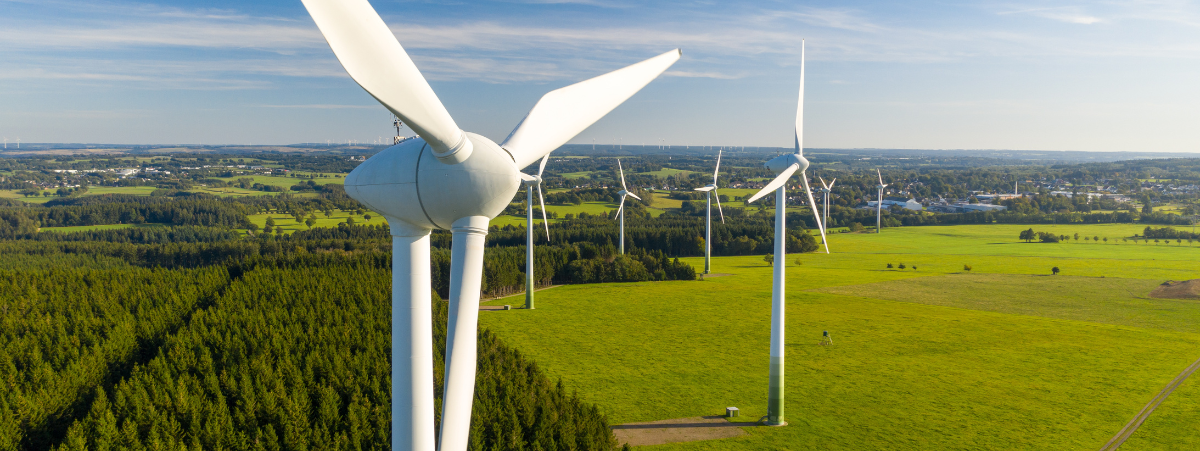Carbon markets are crucial for advancing global efforts to reduce emissions. To optimize their effectiveness, collaboration among stakeholders is essential.
In 2023, the voluntary carbon market and forest carbon credits faced intense scrutiny, with widespread criticism regarding climate benefits, respect for communities and land rights. Potential for misuse by companies seeking to sidestep the challenges of decarbonizing their operations have also been widely debated. However, despite the negativity around the VCM as an approach to tackling climate change, thankfully the market has stood firm in its conviction of the benefits as one solution to tackling climate change and funding the action required to reduce global emissions. In this article we’ll explain how we got to this point and what industry experts predict will be the future of voluntary carbon markets.
What is the difference between regulated and voluntary carbon markets?
Mandatory carbon markets are established in accordance with national, regional, or international policies and regulations. In compliance-based carbon markets, government bodies or regulatory authorities define specific limits on the total greenhouse gas (GHG) emissions permissible for certain industries or businesses. Commonly referred to as emission trading schemes (ETSs), these systems encompass cap-and-trade schemes and baseline-and-credit schemes. Cap-and-trade mechanisms involve setting a cap on emissions and allowing entities to trade allowances, while baseline-and-credit schemes establish a baseline for emissions, rewarding those surpassing it with credits. These mandatory markets play a crucial role in enforcing emission reduction targets and promoting environmental responsibility on a regulatory level.
Voluntary carbon markets on the other hand are not driven by legal obligations but rather by the willingness to offset emissions or invest in nature for ethical reasons. This growing international market operates through a system facilitating the voluntary buying and selling of carbon credits, generated by carbon projects. These projects aim to either prevent emissions or remove carbon from the atmosphere. To manage the increasing number of carbon projects and their associated credits, various voluntary certification and accreditation bodies have been established, ensuring transparency and accountability in the voluntary carbon market.
Read more about the difference between mandatory and voluntary carbon markets.

Image: Promoting wind green energy in Brazil: CORSIA Eligible
What are the challenges of the voluntary carbon market?
Media reports in 2023 highlighted concerns about the credibility of voluntary carbon markets, raising questions about their contribution to climate change mitigation, community well-being, and land rights. Critics argued that some companies were using these markets as a way to avoid genuine efforts to reduce their carbon footprints. Industry research by Trove has shown that companies that participate in voluntary carbon markets are leading across a range of measures of climate action, accountability, and ambition—across the board, outperforming companies that do not buy carbon credits. Separate research by ‘We Mean Business Coalition’ discovered:
– 1.8 x more companies are likely to be decarbonizing year-over-year
-1.3 x more likely to have supplier engagement strategies, an indicator that companies buying carbon credits are also actively working with suppliers, employees, and customers to address climate impacts.
-The median voluntary credit buyer is investing 3X more in emission reduction efforts within their value chain. They do so by investing in emissions reduction activities for their business and operations
What is the history of REDD+?
The concept of REDD (Reducing Emissions from Deforestation and Forest Degradation) initially emerged with the intention of incentivizing countries to safeguard their forests. The fundamental premise was to offer rewards as countries successfully expanded their forest cover and effectively restrained deforestation, with payments linked to measurable results.
The core idea is that to stabilize the climate, we must stop deforestation. In the absence of a more viable mechanism, voluntary carbon markets have been significant in driving the REDD+ projects forward.
What are the 5 REDD+ activities?
REDD+ aims to motivate developing nations to combat climate change by: 1) reducing greenhouse gas emissions through preventing and reversing forest loss and degradation, and 2) enhancing the absorption of greenhouse gasses by conserving, managing, and expanding forests.
The following five REDD+ activities contribute to mitigation actions in the forest sector and have been globally agreed to:
1/Reducing emissions from deforestation
2/Reducing emissions from forest degradation
3/Conservation of forest-carbon stocks
4/Enhancement of forest-carbon stocks
5/Sustainable management of forests

Image: Forest Protection in the Democratic Republic of Congo
What is the integrity council for the voluntary carbon markets ICVCM?
The Integrity Council for the Voluntary Carbon Market operates as an autonomous governance entity overseeing the voluntary carbon market. Its primary objective is to guarantee the voluntary carbon market actively promotes a fair transition toward limiting global warming to 1.5⁰C. At COP28, ICVCM and other organizations involved in different phases of the corporate decarbonization journey published content to demonstrate how each of them play complementary roles in supporting ambitious climate action.
Also at COP28 and in an effort to build trust in voluntary carbon markets, the world’s leading independent carbon crediting standards announced a collaboration to increase the impact of activities under their standards. The collaboration builds on their integrity and aims to enhance transparency and consistency across the market.The associations involved in the partnership are: ACR at Winrock International, ART Architecture for REDD+ Transactions, Climate Action Reserve, Global Carbon Council, Gold Standard and Verra. You can read the full press statement here.

In a joint statement, they said: The way credits are used is undergoing a transformation.
Businesses are increasingly retiring credits to compensate for their emissions alongside their work to decarbonize their operations and make net zero a reality, by 2050 at the latest but for many companies much earlier. In fact, a growing body of research shows that companies using carbon credits decarbonize their own emissions twice as fast as those that do not. New models to frame the use of credits as contributions to country or global mi1ga1on are also emerging. In host countries, projects have always leY behind posi1ve impacts that mul1ply mi1ga1on results beyond what is credited. Such impacts are intensified by host communities and governments receiving a portion of the project benefits and reinvesting these in tangible ac1on to further mitigate emissions and support sustainable development. You can read the full statement here.
The climate conference in Dubai became a platform for proponents of the voluntary carbon trade to advocate for increased market integrity. Organizations supporting voluntary carbon markets collaborated to streamline guidelines for companies, aiming to facilitate the purchase of “high-integrity” carbon credits with confidence.
Which companies are buying carbon credits?
There are probably more of them than you think! Carbon credits are one of the quickest and most efficient ways to channel vital funds to environmental initiatives. The bureaucracy behind government funding is lengthy and complicated. One of the clear advantages of voluntary carbon markets is the ability to get investment into the hands of the project developer quickly. For emerging carbon capture technologies, this is vital for the advancement of research and implementation. So it’s no surprise global organizations such as Microsoft, Apple, Disney, Alphabet and Unilever have opted to include carbon credits in their overall ESG strategies.
At ClimateTrade we work with companies across a range of industries, from travel and hospitality, to transportation and finance. Some of our most notable partners include Santander, Melia Hotels, Cepsa and Telefonica. Read our voluntary carbon market success stories.
What is the 2024 outlook for voluntary carbon markets?
As the impacts of climate change become more evident both locally and globally, the necessity for a diverse range of climate solutions grows increasingly paramount. Questions surrounding the efficacy of methodologies serve as a catalyst, motivating all stakeholders in the carbon market to demonstrate the effectiveness of their climate initiatives. Blockchain-based platforms like ours have played a key role in enhancing transparency and traceability.
Following the lead of major industry players who have aligned themselves in the past 12 months, we anticipate a heightened focus on sharing data and insights. This emphasis aims to illustrate how companies are genuinely leveraging carbon credits to make a positive impact, not only on the climate but also on the communities involved in global projects. The market is trading at approximately 2 billion dollars per year. This is expected to grow as trust in the market returns and organizations search for a multitude of solutions to support them as they avoid, reduce and offset emissions. The price of carbon is set to rise with those buying carbon credits now being promised to secure the best long-term rates.








